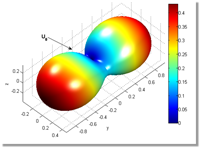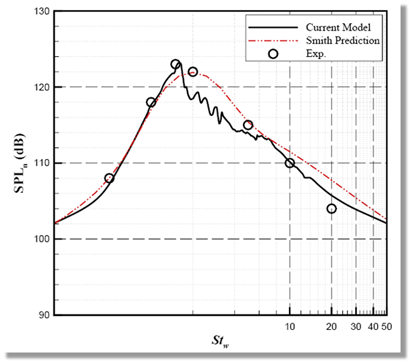In this work numerical modelling of bluff body was performed with application to landing gear noise prediction. Three-dimensional Navier-Stokes simulations were performed using the SotonCAA high-order code to solve the unsteady turbulent near-field flow around representative landing gear components. The acoustic analogy was used to predict the resulting farfield acoustic pressure. A prediction scheme was developed so that the numerical results could be used to predict the noise generated by a simplified landing gear geometry.
The landing gear has been identified as a major contributor to the overall airframe noise due to the highly separated and unsteady turbulent flowfield it induces. Therefore the attenuation of landing gear noise is extremely valuable in terms of reducing the overall aircraft noise. Figure 1 shows the various components and also suggests that the landing gear can be described as a collection of bluff bodies in various configurations. The highly separated and turbulent flow-fields and component interactions contribute to a complex noise source.
The primary objective of this Airbus sponsored project was to develop a physics-based aeroacoustic model for the prediction of landing gear noise. The research was initiated in response to the need for an improved understanding of landing gear component noise characteristics and to assist in the development of landing gear noise prediction tools. This was to be achieved through the numerical investigation of bluff-body noise characteristics.

Figure 1: 3D directivity pattern predicted for a single cylinder.
Circular cylinders in various configurations were selected to represent basic landing gear struts. These configurations included single cylinders in cross-flow and in yawed flow, and cylinders arranged in tandem. Detached-eddy simulations were performed on three-dimensional grids using the high-order SotonCAA solver to solve the unsteady turbulent flowfield whilst the Ffowcs Williams and Hawkings equation was solved to predict the far-field noise characteristics. The result of the computations was a database of farfield noise spectra that when combined with acoustic scaling laws could be used to the model components of a simple landing gear. Figure 2 shows the three-dimensional dipole directivity pattern predicted for a single cylinder exposed to a freestream of M=0.2.
The prediction scheme was validated by comparing predictions with measurements of the noise radiated by a simple two-wheel landing gear model. Figure 3 compares the measured and predicted spectra for the landing gear and Figure 4 indicates the predicted contribution of the individual components

Figure 2 : Landing gear noise prediction results.

Figure 3 : Landing gear noise prediction results.
As a result of this research the mechanisms of bluff-body noise generation and the characteristics of the far-field noise are better understood. Validation of the noise prediction for a simple landing gear model demonstrated the capability of the model to accurately predict correct spectral and directivity characteristics and accurate sound pressure levels.